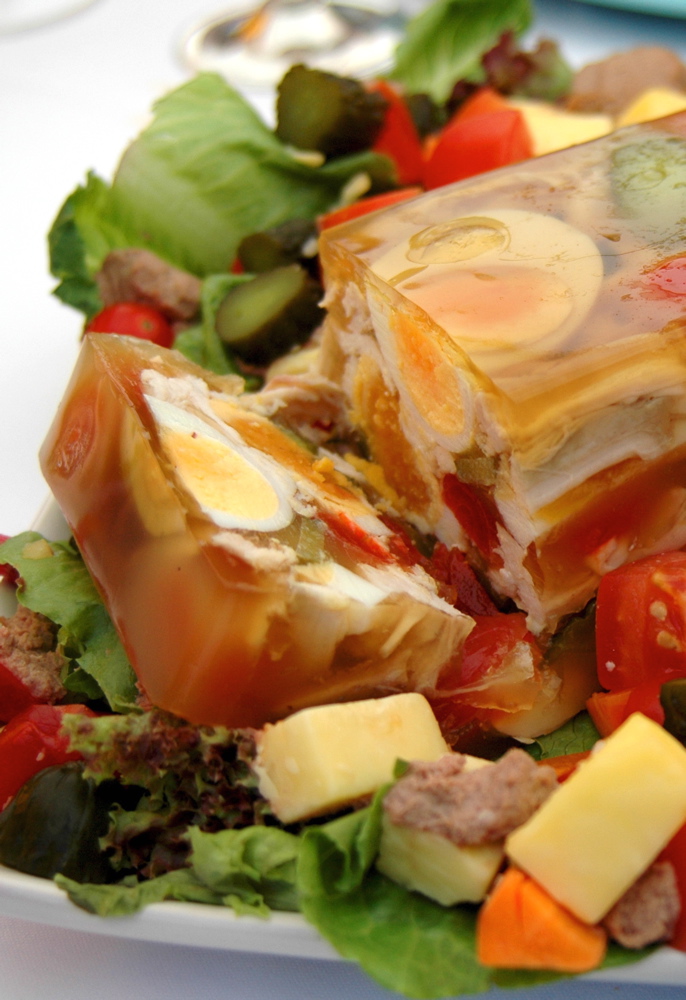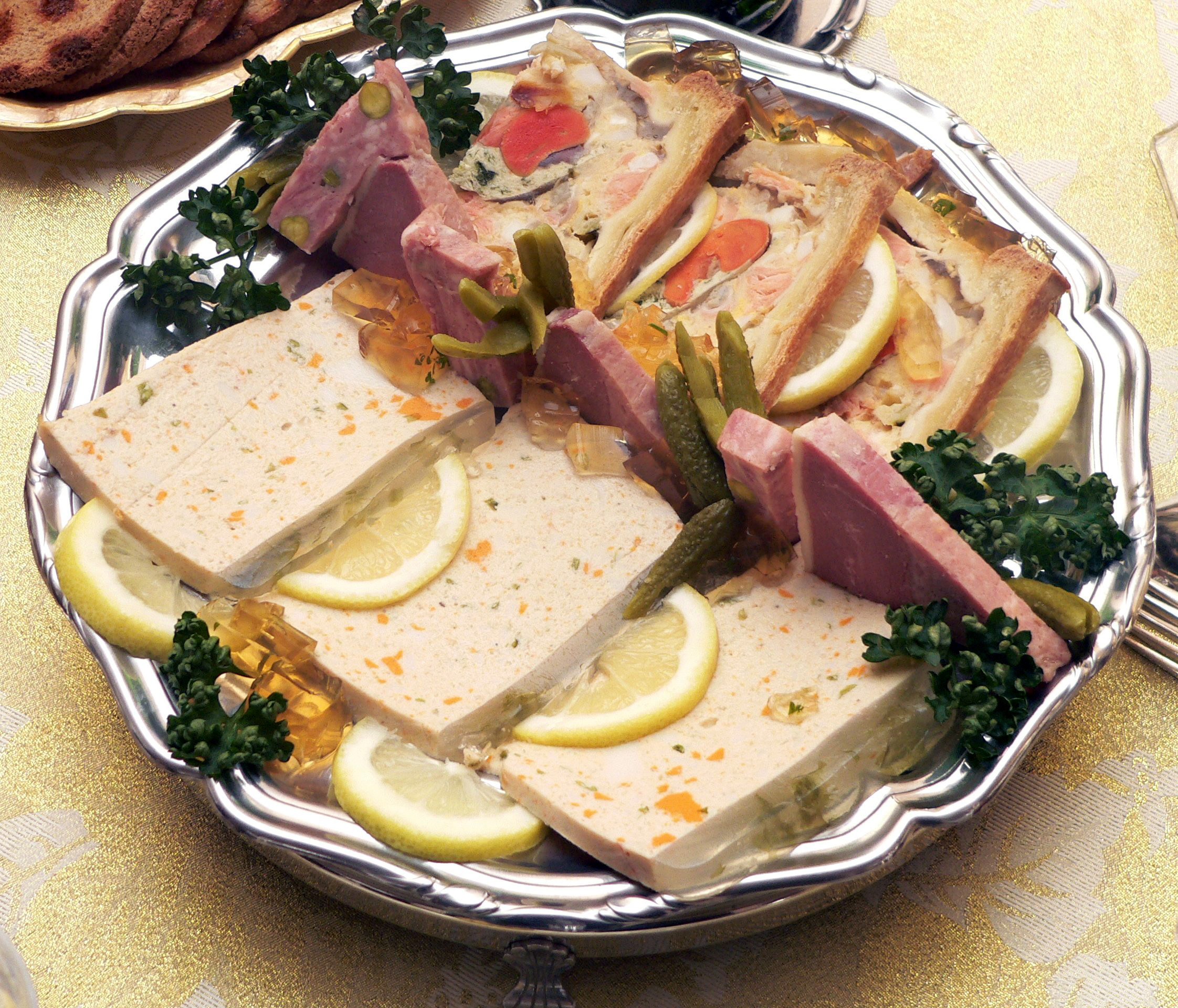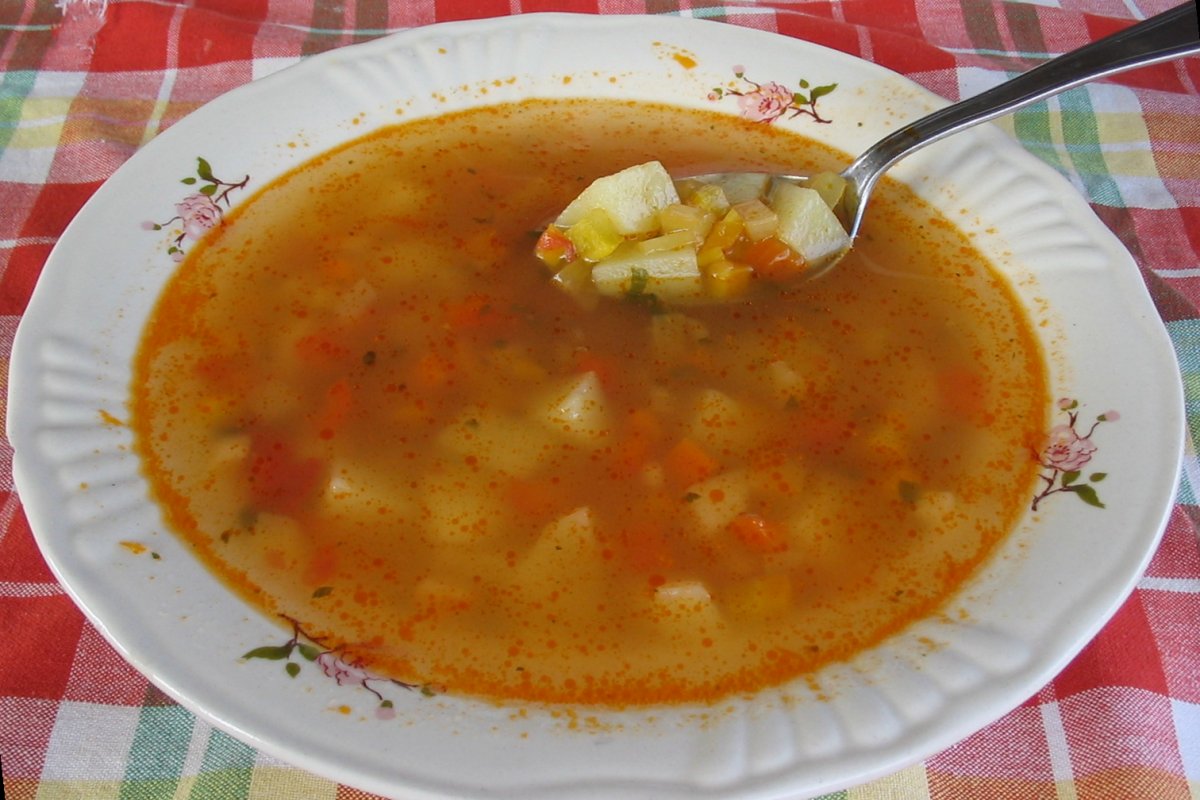|
Salceson
Salceson is a type of meat found in Polish cuisine and other Central and Eastern European cuisines. There are several varieties of salceson which depend on the ingredients. Varieties * Black 'Salceson' which contains blood * White 'Salceson' made with a mixture of seasoned meats, without blood * Ozorkowy (Tongue) 'Salceson' where the major meat component is tongue * Włoski (Italian) 'Salceson' (brawn, skins, spices - garlic, pepper and caraway) * Norweski (Norwegian) 'Salceson' (brawn, skins, broth, salmon, spices) * Saksoński (Saxon) 'Salceson' (brawn, skins, broth, blood, offal, garlic, caraway, spices) * Veal 'Salceson' (veal brawn and skins, broth, spices) * Czosnkowy (Garlic) 'Salceson' (brawn, skins, broth, garlic) * Północny (Northern) 'Salceson' (brawn, pork skin, blood, broth, garlic, liver, spices) * Podlaski 'Salceson' (pork brawn, broth, chives, caraway, spices) Typical ingredients: pork or veal tongues (cured), pork jowl, skins, pork liver. The most popular t ... [...More Info...] [...Related Items...] OR: [Wikipedia] [Google] [Baidu] |
Salceson Czarny
Salceson is a type of meat found in Polish cuisine and other Central and Eastern European cuisines. There are several varieties of salceson which depend on the ingredients. Varieties * Black 'Salceson' which contains blood * White 'Salceson' made with a mixture of seasoned meats, without blood * Ozorkowy (Tongue) 'Salceson' where the major meat component is tongue * Włoski (Italian) 'Salceson' (brawn, skins, spices - garlic, pepper and caraway) * Norweski (Norwegian) 'Salceson' (brawn, skins, broth, salmon, spices) * Saksoński (Saxon) 'Salceson' (brawn, skins, broth, blood, offal, garlic, caraway, spices) * Veal 'Salceson' (veal brawn and skins, broth, spices) * Czosnkowy (Garlic) 'Salceson' (brawn, skins, broth, garlic) * Północny (Northern) 'Salceson' (brawn, pork skin, blood, broth, garlic, liver, spices) * Podlaski 'Salceson' (pork brawn, broth, chives, caraway, spices) Typical ingredients: pork or veal tongues (cured), pork jowl, skins, pork liver. The most popular ty ... [...More Info...] [...Related Items...] OR: [Wikipedia] [Google] [Baidu] |
Tlačenka
Tlačenka is the Czech language, Czech and Slovak language, Slovak variety of head cheese similar to Polish people, Polish ''salceson''. Czech light-colored ''tlačenka'' is made in a number of types. It is generally bonded with brawn—thick pigskin and hock/trotters broth—with various combinations of meat cutoffs (i.e. knuckle, head), offal (tongue, heart, liver) and fat with seasoning (salt and various combinations of spices such as marjoram, garlic, caraway, pepper, cloves, and allspice). Another version, dark-colored ''tlačenka'', is made with added blood. It is served with raw onions, rye bread, vinegar, mustard or smoked sausages. References Czech cuisine Slovak cuisine Offal {{Slovakia-cuisine-stub ... [...More Info...] [...Related Items...] OR: [Wikipedia] [Google] [Baidu] |
2021 Salceson
1 (one, unit, unity) is a number, numeral, and glyph. It is the first and smallest positive integer of the infinite sequence of natural numbers. This fundamental property has led to its unique uses in other fields, ranging from science to sports, where it commonly denotes the first, leading, or top thing in a group. 1 is the unit of counting or measurement, a determiner for singular nouns, and a gender-neutral pronoun. Historically, the representation of 1 evolved from ancient Sumerian and Babylonian symbols to the modern Arabic numeral. In mathematics, 1 is the multiplicative identity, meaning that any number multiplied by 1 equals the same number. 1 is by convention not considered a prime number. In digital technology, 1 represents the "on" state in binary code, the foundation of computing. Philosophically, 1 symbolizes the ultimate reality or source of existence in various traditions. In mathematics The number 1 is the first natural number after 0. Each natural number, ... [...More Info...] [...Related Items...] OR: [Wikipedia] [Google] [Baidu] |
Polish Cuisine
Polish cuisine ( ) is a style of food preparation originating in and widely popular in Poland. Due to History of Poland, Poland's history, Polish cuisine has evolved over the centuries to be very eclectic, and shares many similarities with other national cuisines. Polish cooking in other cultures is often referred to as ''à la polonaise''. Polish cuisine is rich in meat, especially pork, chicken and game, in addition to a wide range of vegetables, spices, fungi and mushrooms, and herbs. Polish Meals – Polish Food – Polish Cuisine . Retrieved 6 June 2011. It is also characterised by its use of various kinds of kluski, pasta, cereals, kasza, kasha and pulses. [...More Info...] [...Related Items...] OR: [Wikipedia] [Google] [Baidu] |
Tobă
''Tobă'', "caș de cap de porc" (which means "pig head cheese"), is a kind of head cheese, a traditional Romanian delicatessen item which looks like a wide sausage, around four inches in diameter, usually using a pig's stomach, stuffed with pork jelly, liver, and skin suspended in aspic Aspic () or meat jelly is a savoury gelatin made with a meat stock (food), stock or broth, set in a mold to encase other ingredients. These often include pieces of meat, seafood, vegetable, or eggs. Aspic is also sometimes referred to as ''aspic .... It is similar to the Hungarian Disznófősajt (which means "pig head cheese"). Notes and references External links * Romanian sausages Precooked sausages {{Romania-stub ... [...More Info...] [...Related Items...] OR: [Wikipedia] [Google] [Baidu] |
Aspic
Aspic () or meat jelly is a savoury gelatin made with a meat stock (food), stock or broth, set in a mold to encase other ingredients. These often include pieces of meat, seafood, vegetable, or eggs. Aspic is also sometimes referred to as ''aspic gelée'' or ''aspic jelly''. In its simplest form, aspic is essentially a gelatinous version of conventional soup. History According to one poetic reference by Ibrahim ibn al-Mahdi, who described a version of a dish prepared with Iraqi carp, it was "like ruby on the platter, set in a pearl ... steeped in saffron thus, like garnet it looks, vibrantly red, shimmering on silver". Historically, meat aspics were made even before fruit- and vegetable-flavoured aspics. By the Middle Ages, cooks had discovered that a thickened meat broth could be made into a jelly. A detailed recipe for aspic is found in ''Le Viandier'', written in or around 1375. In the early 19th century, the French chef Marie-Antoine Carême created chaudfroid. The term ''ch ... [...More Info...] [...Related Items...] OR: [Wikipedia] [Google] [Baidu] |
Offal
Offal (), also called variety meats, pluck or organ meats, is the internal organ (anatomy), organs of a butchered animal. Offal may also refer to the by-products of Milling (grinding), milled grains, such as corn or wheat. Some cultures strongly consider offal consumption to be taboo, while others use it as part of their everyday food, such as lunch meats, or, in many instances, as Delicacy, delicacies. Certain offal dishes—including ''foie gras'' and ''pâté''—are often regarded as gourmet food in the culinary arts. Others remain part of traditional regional cuisine and are consumed especially during holidays; some examples are sweetbread, Jewish chopped liver, Scottish haggis, U.S. chitterlings, and Mexican Menudo (soup), menudo. On the other hand, intestines are traditionally used as casing for sausages. Depending on the context, ''offal'' may refer only to those parts of an animal carcass discarded after butchering or skinning; offal not used directly for human or anim ... [...More Info...] [...Related Items...] OR: [Wikipedia] [Google] [Baidu] |
Romanian Cuisine
Romanian cuisine () is a diverse blend of different dishes from several traditions with which it has come into contact, but it also maintains its own character. It has been influenced mainly by Ottoman cuisine, Ottoman and Turkish cuisine but also a series of European cuisines in particular from the Balkan cuisine, Balkan Peninsula, Greek cuisine and Hungarian cuisine as well as culinary elements stemming from the cuisines of Central Europe. Romanian cuisine includes numerous holiday dishes arranged according to the mentioned season and holiday since the country has its religious roots in Eastern Orthodoxy. Romanian dishes consist of vegetables, cereals, fruits, honey, milk, dairy products, meat and game. Various kinds of dishes are available, which are sometimes included under a generic term; for example, the category ''ciorbă'' includes a wide range of soups with a characteristic sour taste. Variations include meat and vegetable soup, tripe (''ciorbă de burtă'') and calf f ... [...More Info...] [...Related Items...] OR: [Wikipedia] [Google] [Baidu] |




